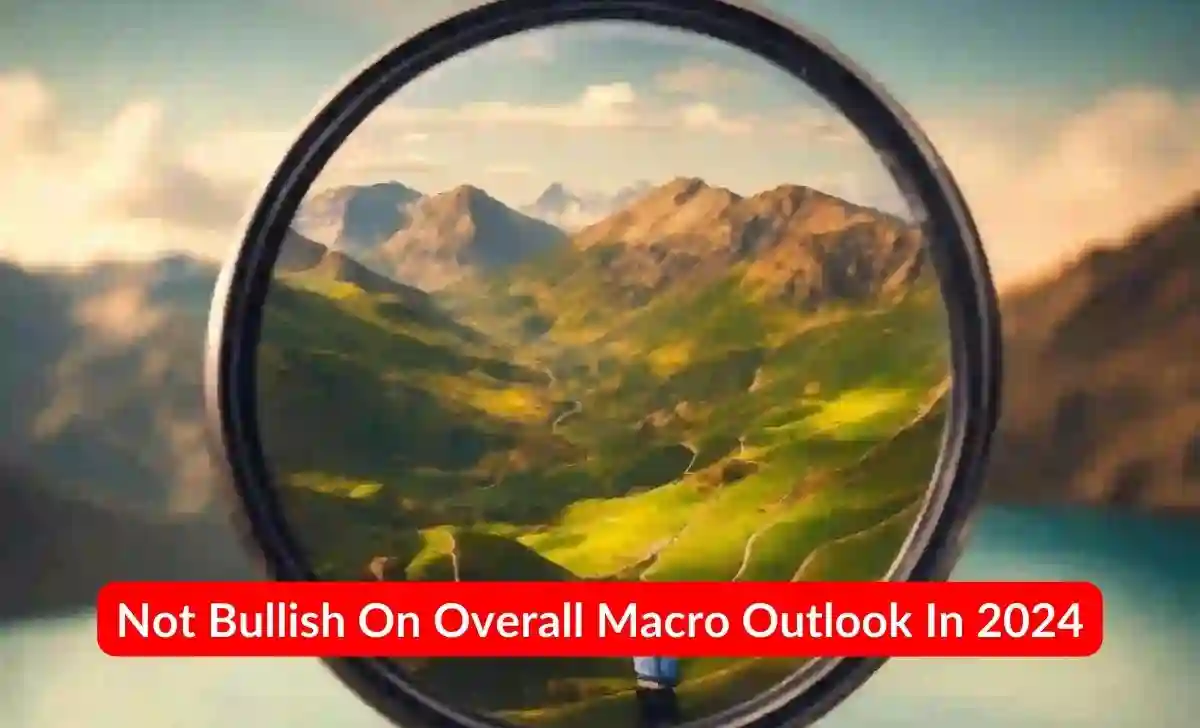Explore the latest findings from the All India Household Consumption Expenditure Survey, revealing insights into shifting consumption patterns, inflationary trends, and socioeconomic dynamics shaping the Indian economy.
All India Household Consumption Expenditure Survey
In a thought-provoking discussion, eminent economists Mridul Saggar from IIMK, Samiran Chakraborty representing Citi, and Soumya Kanti Ghosh of the State Bank of India converge to dissect the latest findings from the All India Household Consumption Expenditure Survey. Delving into the nuances of consumption patterns, inflationary trends, and socioeconomic dynamics, these esteemed experts offer invaluable insights into the shifting landscape of household spending and its broader implications for economic policy and governance.
Shifts in Consumption Patterns
The discussion on shifts in consumption patterns offers valuable insights into the evolving preferences and priorities of Indian households, as revealed by the All India Household Consumption Expenditure Survey.
Economists analyze the data to discern notable changes in the composition of consumption expenditure. One significant trend highlighted in the survey is the increased allocation of resources towards conveyance and consumer durables by both rural and urban families. This shift underscores changing lifestyle preferences and the growing importance of mobility and access to modern amenities.
The rise in expenditure on conveyance reflects a broader trend of increased mobility among Indian households. Economists speculate on the underlying causes driving this surge, considering factors such as urbanization, improved infrastructure, and changing transportation preferences. They also contemplate whether the rise in conveyance expenses signifies a greater reliance on private transportation options due to perceived inadequacies in public transport systems.
Additionally, the survey indicates a notable uptick in spending on consumer durables, suggesting a heightened demand for household appliances and electronic goods. Economists attribute this trend to rising disposable incomes, technological advancements, and changing consumer aspirations. They discuss the implications of this shift for economic growth and industrial development, noting the potential for increased investment in manufacturing and retail sectors catering to consumer durables.
Furthermore, economists analyze regional variations in consumption patterns, considering factors such as income levels, urban-rural divide, and cultural preferences. They emphasize the importance of understanding localized consumption trends for targeted policy interventions and market strategies.
Overall, the discussion on shifts in consumption patterns offers valuable insights into the dynamic nature of consumer behavior in India. By delving into the drivers and implications of these trends, economists gain a deeper understanding of socioeconomic dynamics and consumer preferences, informing future policy decisions and business strategies.
Also Read:
Impact on Core Inflation
Economists delve into the implications of the All India Household Consumption Expenditure Survey on core inflation, examining the potential effects of shifting consumption patterns on overall price levels and economic stability.
The survey data reveals a decrease in expenditure on essential items such as food and fuel, prompting economists to assess the impact on core inflation. While the decline in spending on these essentials may initially suggest a reduction in inflationary pressures, economists caution against overlooking other factors that could influence core inflation.
One notable trend highlighted in the survey is the significant increase in expenditure on conveyance, alongside rising rents. These expenditure categories, which contribute to transportation costs and housing expenses, are considered integral components of core inflation. Economists express concern that the steep rise in conveyance expenses and rents could offset the decline in core inflation stemming from reduced spending on food and fuel.
Moreover, economists analyze the composition of core inflation, distinguishing between components influenced by changes in consumption patterns and those driven by structural factors. They emphasize the need to account for the relative weight of different expenditure categories in calculating core inflation, highlighting the importance of a comprehensive approach to inflation measurement.
Furthermore, economists acknowledge the challenges in accurately assessing core inflation amidst evolving consumption patterns and economic dynamics. They stress the importance of monitoring inflationary pressures closely and adjusting monetary policy measures accordingly to maintain price stability and support economic growth.
Overall, the discussion on the impact on core inflation underscores the complex interplay between consumption patterns, price dynamics, and monetary policy. By examining the implications of shifting expenditure trends on inflationary pressures, economists gain valuable insights into the broader macroeconomic environment, informing policy decisions aimed at promoting price stability and economic resilience.
Concerns Over Education Spending
The economists delve into a critical concern regarding the declining expenditure on education among both rural and urban households, as highlighted by the All India Household Consumption Expenditure Survey.
Economists express profound concern over this trend, emphasizing the pivotal role of education in fostering human capital development and driving economic progress. They underscore the significance of education as a fundamental determinant of social mobility and economic opportunity, particularly in a rapidly evolving global landscape.
The decline in education spending over consecutive survey periods raises alarm bells among economists, prompting them to scrutinize potential explanations for this worrying trend. While one plausible interpretation posits the universalization of education under the Right to Education Act, economists remain skeptical about its efficacy in mitigating the decline in education expenditure.
Moreover, economists question the adequacy of free education initiatives in addressing the multifaceted challenges facing the education sector, including infrastructure deficiencies, quality of instruction, and accessibility issues, particularly in marginalized communities.
The discussion underscores the broader implications of underinvestment in education, including its adverse effects on human capital accumulation, labor productivity, and long-term economic growth. Economists stress the need for concerted efforts to reverse this trend and prioritize education spending as a strategic investment in India’s future prosperity.
Furthermore, the conversation delves into the role of public policy in addressing the systemic barriers hindering access to quality education and advocating for targeted interventions aimed at enhancing educational infrastructure, teacher training, and curriculum development.
Overall, the concerns over declining education spending underscore the imperative for proactive measures to revitalize the education sector and ensure equitable access to quality education for all segments of society. By prioritizing education as a cornerstone of economic development, policymakers can lay the foundation for inclusive growth and sustainable prosperity in India.
Debating Poverty Reduction
Within the discussion on poverty reduction, economists engage in a nuanced exploration of the survey data, aiming to decipher the extent of progress and its implications for socioeconomic welfare.
The conversation revolves around contrasting viewpoints regarding the magnitude of poverty reduction indicated by the survey findings. Some economists argue for a significant decline in poverty levels, citing extrapolations based on specific income thresholds and comparative data analysis. These economists emphasize the potential eradication of extreme poverty, pointing to optimistic projections that suggest a substantial decrease in poverty rates.
However, amidst these optimistic projections, others express caution and highlight the complexities involved in accurately assessing poverty levels. These economists stress the importance of comprehensive data analysis, urging for a closer examination of population demographics and distribution patterns. They emphasize the need for detailed scrutiny of poverty lines and income thresholds, taking into account regional disparities and socioeconomic factors.
Moreover, economists discuss the challenges inherent in interpreting poverty data, acknowledging the limitations of extrapolations and the potential for revisions based on forthcoming data releases. They underscore the importance of accounting for factors such as inflation, purchasing power parity, and population dynamics in arriving at accurate poverty estimates.
Furthermore, the conversation delves into methodological considerations, particularly regarding the calculation of poverty thresholds and the imputation of missing data. Economists discuss the implications of different approaches to poverty measurement, highlighting the need for transparency and rigor in data analysis.
Overall, the discussion on poverty reduction reflects a nuanced assessment of the survey findings, encompassing diverse perspectives and analytical frameworks. While optimistic projections offer hope for significant progress, economists emphasize the importance of cautious interpretation and rigorous methodology in assessing poverty dynamics.
Interpreting Conveyance Expenditure
The discussion on conveyance expenditure revolves around understanding the underlying factors driving the significant increase in transportation costs among Indian households, as revealed by the All India Household Consumption Expenditure Survey.
Economists delve into the potential implications of this surge in conveyance expenses, exploring various hypotheses to elucidate its causes. One plausible explanation posits that the rise in mobility reflects broader socioeconomic trends, such as urbanization, increased access to employment opportunities, and changing lifestyle preferences.
Moreover, economists contemplate whether the surge in conveyance expenditure signifies a shift towards private transportation options due to perceived inadequacies in public transport systems. They analyze the potential consequences of this trend, including its impact on traffic congestion, environmental sustainability, and household budgets.
Furthermore, economists interrogate the role of transportation infrastructure and policy interventions in shaping conveyance expenditure patterns. They discuss the need for investments in public transportation systems, last-mile connectivity solutions, and sustainable mobility initiatives to address the burgeoning demand for transportation services.
Additionally, economists examine regional disparities in conveyance expenditure, considering factors such as urban-rural divide, income levels, and geographic accessibility. They emphasize the importance of tailored policy responses that account for localized transportation needs and socioeconomic realities.
Overall, the conversation on interpreting conveyance expenditure underscores the complex interplay between transportation dynamics, urban development, and household spending patterns. By dissecting the underlying drivers and implications of rising conveyance expenses, economists contribute to a deeper understanding of mobility trends and inform policy decisions aimed at enhancing transportation accessibility, affordability, and sustainability for all segments of society.
Challenges in Addressing Inequality
Within the discourse on addressing inequality, economists confront the multifaceted nature of socioeconomic disparities and the complexities involved in devising effective strategies for amelioration.
The survey data highlights consumption inequality, prompting economists to explore the underlying dynamics and implications for broader socioeconomic welfare. While the reduction in extreme poverty signals progress, economists caution against overlooking persistent disparities between different socioeconomic strata.
One of the foremost challenges discussed is the distinction between various forms of inequality, including income inequality, wealth inequality, and consumption inequality. Economists recognize that each dimension of inequality presents unique challenges and requires tailored interventions for effective mitigation.
Moreover, economists emphasize the importance of understanding the underlying drivers of inequality, including structural factors such as access to education, healthcare, and economic opportunities. They stress the need for comprehensive policy measures aimed at addressing root causes rather than merely addressing surface-level manifestations of inequality.
Furthermore, economists acknowledge the limitations of traditional measures of inequality and advocate for more nuanced approaches that consider intersectionality and regional disparities. They emphasize the importance of disaggregated data analysis to identify vulnerable groups and target interventions effectively.
Additionally, economists discuss the role of public policy in tackling inequality, highlighting the need for a holistic approach that encompasses social welfare programs, progressive taxation, and inclusive economic policies. They underscore the importance of political will and societal commitment in fostering greater equity and social justice.
Overall, the discussion on addressing inequality reflects a recognition of the complex challenges involved and the need for multifaceted strategies that address underlying structural barriers. By engaging in dialogue and collaboration, economists aim to advance our understanding of inequality dynamics and contribute to the formulation of policies that promote inclusive growth and equitable distribution of resources.
Political Implications
The dialogue extends to the political realm as economists dissect the implications of shifting consumption patterns on electoral promises and governance strategies.
One striking observation from the survey is the evolving nature of consumer preferences, particularly regarding the allocation of resources towards consumer durables over traditional essentials like food. This trend carries significant political ramifications, as reflected in the changing landscape of electoral promises.
Politicians, keenly attuned to voter sentiments, are likely to recalibrate their platforms to align with emerging consumer priorities. As households increasingly prioritize access to modern amenities and technological conveniences, electoral campaigns may pivot towards offering less emphasis on traditional welfare policies related to food security and more on infrastructure and utilities such as electricity.
This shift in political rhetoric underscores the interconnectedness between economic dynamics and governance strategies. Politicians are acutely aware of the need to resonate with evolving consumer aspirations to secure electoral success, prompting strategic adjustments in policy agendas and campaign messaging.
Furthermore, the discussion delves into the broader implications of these political shifts for governance and policy formulation. Economists contemplate the potential impact on public spending priorities, resource allocation, and the overall direction of socioeconomic development.
By acknowledging the political implications of changing consumption patterns, economists contribute to a deeper understanding of the nexus between economics and governance. They highlight the need for policymakers to remain responsive to evolving consumer preferences while also addressing underlying socioeconomic inequalities and structural barriers to inclusive growth.
Overall, the discussion on political implications underscores the dynamic nature of electoral politics and the imperative for policymakers to adapt to changing socioeconomic realities. By recognizing the influence of consumption trends on political agendas, economists offer valuable insights into the intersection of economics and governance in shaping the trajectory of national development.
Looking Ahead
As economists await further data releases and delve deeper into the survey findings, discussions on household consumption patterns are expected to intensify. The survey serves as a valuable resource for understanding evolving socioeconomic dynamics and shaping future policy directions.
In conclusion, the All India Household Consumption Expenditure Survey provides valuable insights into evolving consumption patterns, poverty dynamics, and inequality trends, prompting robust discussions among economists and policymakers alike.









